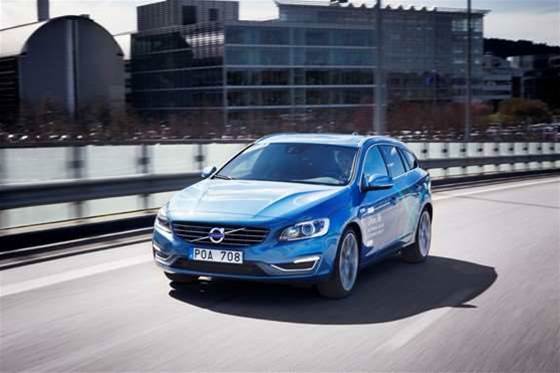Car giant Volvo will take its autonomous cars out onto public roads with real drivers in 2017 after creating a "production-viable" vehicle boasting a complex network of sensors, lasers and cameras alongside a cloud-based positioning system.

Volvo's Drive Me project aims to put autonomous cars on streets around its hometown of Gothenburg in Sweden. The scheme is now in its second year, and the company late last unveiled the technology it has developed so far to integrate the self-driving vehicles into real traffic on public roads.
Volvo claims it has designed a production-viable autonomous driving system after undertaking extensive analysis of potential faults. The Autopilot system allows cars to navigate entirely unassisted, using a combination of cameras, sensors, GPS and radar to track its surroundings.
The sensors generate a 360-degree, 3D picture of the vehicle's surroundings, while the radar and cameras placed in the windscreen read traffic signs, road conditions and other objects on the road.
Additional radar transmitters have been placed at each corner of the vehicle, alongside two extra cameras in the side mirrors and two in the back and front bumpers to detect proximity and lane markers.
Multiple other laser scanners, cameras and radar are deployed to detect objects and chart depth perception, while a GPS solution interacts with accelerometers and gyroscopes to help the vehicles navigate.
The entire system is connected to traffic authorities' control centres for up-to-date mapping and traffic information, Volvo said.
The vehicle is also equipped with an independent back-up system that will take over if the main system fails, in order to bring the vehicle to a safe stop, Volvo said. Back-up systems are also provided for the brake and steering systems.
"We are entering uncharted territory in the field of autonomous driving,” Volvo’s senior vice president for research and development Peter Mertens said in a statement.
“Taking the exciting step to a public pilot, with the ambition to enable ordinary people to sit behind the wheel in normal traffic on public roads, has never been done before.”


_(22).jpg&h=140&w=231&c=1&s=0)
_(20).jpg&h=140&w=231&c=1&s=0)
.png&h=140&w=231&c=1&s=0)






 iTnews Executive Retreat - Security Leaders Edition
iTnews Executive Retreat - Security Leaders Edition











_(1).jpg&h=140&w=231&c=1&s=0)



